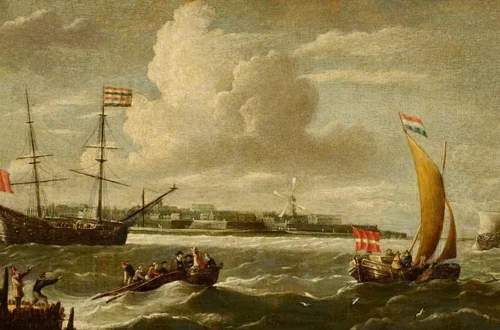
The Football War
A World Cup qualifying match turned into an international crisis. This bloody, four-day conflict between the nations of Honduras and El Salvador has gone down in history as the Football War, or in other areas of the world, the Soccer War. But what correlation did the soccer match and the conflict really have? This is the story of the 100-hour war between two neighboring nations.
To understand the beginning of this conflict, some necessary demographic issues must be discussed. Honduras and El Salvador are neighboring nations in Latin America. In 1969, when the Football War broke out, the population of El Salvador was around 3 million people, while the population of Honduras was only around 2.6 million. Despite the population difference, Honduras is nearly five times larger in land area than El Salvador.
The small land mass of El Salvador led to major issues with overpopulation in the nation, as well as significant economic tensions. This pushed many Salvadoran citizens to migrate to Honduras to find work and better economic opportunities throughout the 1900s, a problem that persisted into the 1960s. By 1969, around 300,000 Salvadorans were living and working in Honduras, making up about 10 percent of the Honduran population.
In El Salvador and Honduras, much of the land was owned by elites and United States companies, like the United Fruit Company. This left little land and farming area available for the peasants, who were constantly fighting against the elites to gain more area for economic support. As more and more Salvadorans moved into Honduras, the Honduran population felt threatened by the thought that Salvadorans were taking their jobs, which they were already strained for. This ongoing migration of Salvadorians into Honduras further strained the relationship between the two nations.
With these heightened tensions, the government of Honduras developed a solution to the issue of the migrating Salvadorans: a land reform law, urging the Salvadorans to return to El Salvador and move off of Honduran land. When this law was not effective, the Honduran government began to forcibly remove Salvadorans from Honduras. This only increased the strain between the two nations, as the Salvadoran government claimed that Honduras was violating their citizens’ rights, and allegations of violent removal arose.
On the evening of June 26th, 1969, El Salvador officially severed diplomatic ties with Honduras. This announcement came just one night before the men’s national soccer teams of El Salvador and Honduras met in their third and final World Cup qualifier for the summer. After the full 90 minutes of play in the match had elapsed, the nations were tied at 2-2, both hungry for the win, especially considering neither El Salvador nor Honduras had ever qualified for a World Cup. In the final minutes of overtime, a Salvadoran player scored the winning goal, solidifying their win over Honduras. Over the next three weeks, the conflict between the nations continued to intensify, getting increasingly violent as time passed. Border skirmishes were frequent, and despite efforts to quell the disagreement, the violence continued.
On July 14th, following the tense soccer match and the frequent skirmishes, El Salvador’s forces invaded Honduras, officially starting the war known as the Football War. El Salvador flew World War II-era warplanes to bomb Honduran airfields, while also marching on land toward Tegucigalpa in Honduras. The fighting continued on the 15th of July, as the Honduran forces began to utilize their fleet of planes to combat the Salvadorian bombings, inciting major losses for the Salvadorians. On July 16th, the war’s only true and major battle took place at Nueva Ocotepeque in Honduras. The Salvadorians took a victory in this battle, forcing Honduras to retreat and taking control of the city.
As the conflict continued, the Organization of American States, an international peacekeeping organization designed to foster cooperation between nations in the Western Hemisphere, met to propose a ceasefire between the two nations. Despite initial resistance against the ceasefire from both sides, by July 18th, both nations agreed to end the conflict. Although the official ceasefire was declared on July 18th, ending the four-day war, El Salvador initially refused to remove its troops from Honduras until they were given the guarantee of safety for Salvadoran migrants in Honduras, which wasn’t provided. However, after pressure from the Organization of American States and threats of sanctions, El Salvador finally withdrew their troops in August 1969. El Salvador went on to play in the World Cup, but lost every match they played, and did not make it past the group stage. Despite the relatively short-lived war, significant damage had been done. In only four days, the casualties were thought to have reached 3000 deaths, with many being civilians. Beyond the casualties of the war, its broader impacts were felt in the decades to come. There were hundreds of thousands of displaced Salvadorans who were left with no choice but to return to their overpopulated home country, resulting in an extreme state of unrest. The unrest sparked by the Football War is thought to be one of the causes of the ensuing Salvadoran Civil War, which began just a few years later in 1972, lasting for two years and bringing on 70,000 deaths. Moreover, trade ceased between El Salvador and Honduras for years following the war, and the border was closed. In 1980, a peace treaty was finally signed, symbolizing a step in reestablishing normal relations between the two nations. So, was the Football War of 1969 really caused by football? No. But the conflict that coincided with the World Cup qualifying matches between El Salvador and Honduras left a lasting legacy in Latin American relations for years to come.
This was the politics, stay tuned for the dinner!



